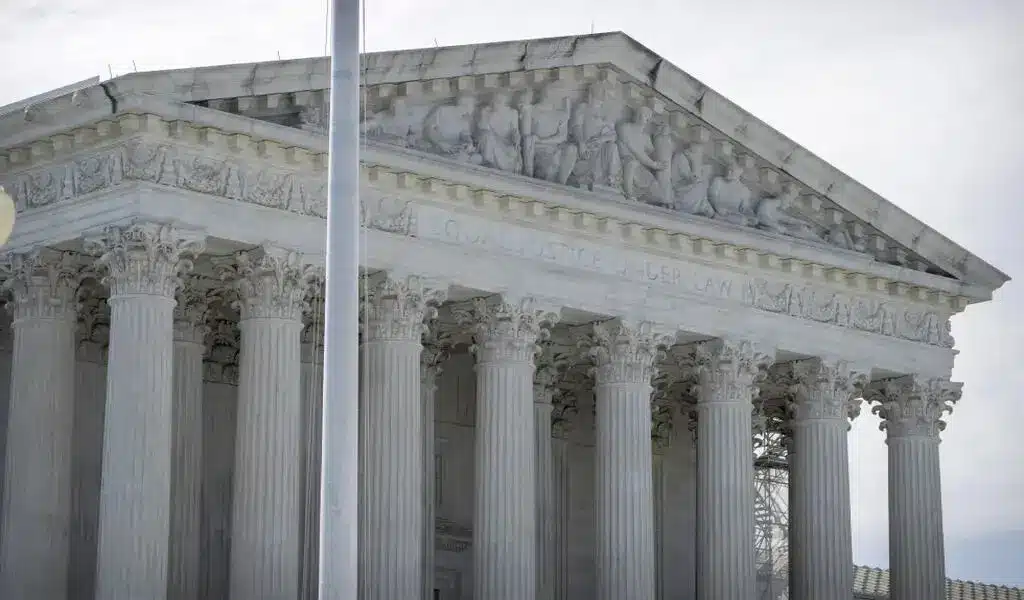News
China’s Dams on Mekong River Become a Battle for United States

The Mighty Mekong River has become a new battle front in US-China rivalry, environmentalists and officials say. China is overtaking the United States in both spending and influence over lower Mekong countries. Furthermore at the mercy of its control of the Mekong river’s waters.
It’s a confrontation in which the United States – which has largely maintained funding for an Obama-era environmental and development programs in the Lower Mekong River – is losing ground.
The two powers’ struggle recently moved into the realm of science. With the United States and Chinese governments each touting different reports on whether China’s 11 dams on the river were harming nations downstream.
China’s dams have given it extensive control of the waters that flow down to Laos, Myanmar, Thailand, Cambodia and Vietnam. Countries which have long depended on the river for agriculture, fisheries, and increasingly for hydropower in Laos.
China Dams control flow of the Mekong River

That control enables China to set the agenda for development linked to the waterway, and to exclude the United States from a role after decades of promoting Mekong projects as a way to exert its influence in the region.
“This is becoming a geopolitical issue, much like the South China Sea, between the United States and China,” said Mr Witoon Permpongsacharoen of the group Mekong Energy and Ecology Network.
The state of the Mekong is an urgent worry for the 60 million people who depend on it for farming and fishing as it flows from China, where it is known as the Lancang, through South-east Asia, before emptying into the sea from Vietnam’s delta.
Last year saw record drought, with Lower Mekong river levels at the lowest in decades.
Fewer and smaller fish catches have been reported for years.
A US ambassador in the region described China as “hoarding” water in its 11 dams on its upper portion of the 4,350km river, harming the livelihoods of millions of people in downstream countries.
China also has been stepping up activities of its Lancang Mekong Cooperation group (LMC), a relatively new intergovernmental body that a second US ambassador decried as trying to “sideline” the 25-year-old Mekong River Commission (MRC).
The MRC traces its origins back to US efforts to promote development during the Cold War.
It works with the governments of Laos, Thailand, Cambodia and Vietnam to foster the sharing and sustainable development of the river and its resources.
China’s foreign ministry told Reuters any US suggestion that Beijing was trying to take over the Mekong conversation was groundless.
“Countries outside the region should refrain from stirring up trouble out of nothing,” the ministry said.
China’s Dams Holding Back Water

The US-China rivalry broke into a war of words after a Washington-funded study in April concluded that China’s dams held back waters during last year’s drought.
The study by Eyes on Earth, a US-based research and consulting company specialising in water, built a prediction model based on satellite imaging and MRC data that it said showed “missing” waters downstream, starting in around 2010.
US Ambassador to Cambodia Patrick Murphy said he was “quite surprised” at the stark findings.
“That was the same here in the region,” Mr Murphy told Reuters, referring to the reaction to the revelation.
“To learn that a primary source for the diminished level of the Mekong, and changes in the Mekong in the Lower Mekong region, is what’s happening upstream in China – with essentially the hoarding of water,” Mr Murphy said.
China reacted with outrage, with its embassy in Thailand denouncing the study as “politically motivated, aimed at targeting China with ill intent” – a charge its author and US officials denied.
China Says Dam’s Help Alleviate drought
Then, last week, China’s Global Times published an article about a Chinese study it characterized as disproving the Eyes on Earth report.
“River dams in China helped alleviate drought along Lancang-Mekong, research finds,” read the headline in the newspaper published by the People’s Daily, the official newspaper of China’s ruling Communist Party.
However, the study by Tsinghua University and the China Institute of Water Resources in fact said China’s dams could, in future, help alleviate drought, not that they actually did so in 2019, according to a copy obtained by Reuters.
“We are not meaning to compare with any other report. We aim to provide some basic facts to facilitate mutual understanding, trust and therefore cooperation in the basin,” lead researcher Tian Fuqiang told Reuters in an email.
Researchers will argue about the science, but for the Lower Mekong countries, it comes down to trust and power.
Mr Sebastian Strangio, author of a book on South-east Asia’s relations with China, In The Dragon’s Shadow, said China’s downstream neighbours almost certainly trust China’s narrative less – but Beijing’s regional might can’t be ignored.
“They rely on China now for a life-giving resource, and it’s very difficult for them to openly challenge the Chinese government on its dam building,” Mr Strangio said.
Reluctant to take sides, none of the MRC countries has commented publicly in favour of either the Chinese or American study.
Separate cooperation groups

The US has spent US$120 million (S$166 million) on its Lower Mekong Initiative since it was founded 11 years ago.
China appears to be spending more: in 2016, the China-sponsored LMC set up a $300 million fund for research grants to be awarded for the five downstream countries.
The LMC did not respond to requests for an interview nor to questions about its 95 proposed projects, planned or underway, that are on a list reviewed by Reuters from its first Ministerial Meeting in Beijing in December.
The Chinese-led group is taking a higher profile with an annual foreign ministers’ meeting and plans for a summit of leaders, possibly including Chinese President Xi Jinping, while less heavy-hitting water and environment officials typically go to MRC meetings, a Thai government official said.
The LMC drew criticism from the US ambassador to Thailand, Mr Michael DeSombre, who called it a “parallel organisation” to the MRC.
“We really would encourage the People’s Republic of China to work together with the Mekong River Commission, rather than trying to sideline it by creating its own organisation that it controls,” Mr DeSombre said.
China doesn’t share data
Despite the US warnings, officials at the Mekong River Commission say it welcomes cooperation with the LMC and China. One reason is that the commission and member governments want more data about operations of China’s dams, which hold back a combined capacity 47 billion cubic metres of water.
In 2002, China started notifying downstream countries of when it would release water that could cause flooding.
But China has disclosed little else to enable downstream countries to make plans and request adjustments in the river’s flows.
China, at a February meeting of the LMC, promised more cooperation with its neighbours, but when speaking privately, regional officials are sceptical.
“China hasn’t shared any constructive data,” said a Vietnamese official who declined to be identified.
Source: Reuters

News
Trudeau’s Gun Grab Could Cost Taxpayers a Whopping $7 Billion

A recent report indicates that since Trudeau’s announcement of his gun buyback program four years ago, almost none of the banned firearms have been surrendered.
The federal government plans to purchase 2,063 firearm models from retailers following the enactment of Bill C-21, which amends various Acts and introduces certain consequential changes related to firearms. It was granted royal assent on December 15 of last year.
This ban immediately criminalized the actions of federally-licensed firearms owners regarding the purchase, sale, transportation, importation, exportation, or use of hundreds of thousands of rifles and shotguns that were previously legal.
The gun ban focused on what it termed ‘assault-style weapons,’ which are, in reality, traditional semi-automatic rifles and shotguns that have enjoyed popularity among hunters and sport shooters for over a century.
In May 2020, the federal government enacted an Order-in-Council that prohibited 1,500 types of “assault-style” firearms and outlined specific components of the newly banned firearms. Property owners must adhere to the law by October 2023.
Trudeau’s Buyback Hasn’t Happened
“In the announcement regarding the ban, the prime minister stated that the government would seize the prohibited firearms, assuring that their lawful owners would be ‘grandfathered’ or compensated fairly.” “That hasn’t happened,” criminologist Gary Mauser told Rebel News.
Mauser projected expenses ranging from $2.6 billion to $6.7 billion. The figure reflects the compensation costs amounting to $756 million, as outlined by the Parliamentary Budget Office (PBO).
“The projected expenses for gathering the illegal firearms are estimated to range from $1.6 billion to $7 billion.” “This range estimate increases to between $2.647 billion and $7 billion when compensation costs to owners are factored in,” Mauser stated.
Figures requested by Conservative MP Shannon Stubbs concerning firearms prohibited due to the May 1, 2020 Order In Council reveal that $72 million has been allocated to the firearm “buyback” program, yet not a single firearm has been confiscated to date.
In a recent revelation, Public Safety Canada disclosed that the federal government allocated a staggering $41,094,556, as prompted by an order paper question from Conservative Senator Don Plett last September, yet yielded no tangible outcomes.
An internal memo from late 2019 revealed that the Liberals projected their politically motivated harassment would incur a cost of $1.8 billion.
Enforcement efforts Questioned
By December 2023, estimates from TheGunBlog.ca indicate that the Liberals and RCMP had incurred or were responsible for approximately $30 million in personnel expenses related to the enforcement efforts. The union representing the police service previously stated that the effort to confiscate firearms is a “misdirected effort” aimed at ensuring public safety.
“This action diverts crucial personnel, resources, and funding from tackling the more pressing and escalating issue of criminal use of illegal firearms,” stated the National Police Federation (NPF).
The Canadian Sporting Arms & Ammunition Association (CSAAA), representing firearms retailers, has stated it will have “zero involvement” in the confiscation of these firearms. Even Canada Post held back from providing assistance due to safety concerns.
The consultant previously assessed that retailers are sitting on almost $1 billion worth of inventory that cannot be sold or returned to suppliers because of the Order-In-Council.
“Despite the ongoing confusion surrounding the ban, after four years, we ought to be able to address one crucial question.” Has the prohibition enhanced safety for Canadians? Mauser asks.
Illegally Obtained Firearms are the Problem
Statistics Canada reports a 10% increase in firearm-related violent crime between 2020 and 2022, rising from 12,614 incidents to 13,937 incidents. In that timeframe, the incidence of firearm-related violent crime increased from 33.7 incidents per 100,000 population in 2021 to 36.7 incidents the subsequent year.
“This marks the highest rate documented since the collection of comparable data began in 2009,” the criminologist explains.
Supplementary DataData indicates that firearm homicides have risen since 2020. “The issue lies not with lawfully-held firearms,” Mauser stated.
Firearms that have been banned under the Order-in-Council continue to be securely stored in the safes of their lawful owners. The individuals underwent a thorough vetting process by the RCMP and are subject to nightly monitoring to ensure there are no infractions that could pose a risk to public safety.
“The firearms involved in homicides were seldom legally owned weapons wielded by their rightful owners,” Mauser continues. The number of offenses linked to organized crime has surged from 4,810 in 2016 to a staggering 13,056 in 2020.
“If those in power … aim to diminish crime and enhance public safety, they ought to implement strategies that effectively focus on offenders and utilize our limited tax resources judiciously to reach these objectives,” he stated.
Related News:
Millennials in Canada Have Turned their Backs on Justin Trudeau
Millennials in Canada Have Turned their Backs on Justin Trudeau
News
Google’s Search Dominance Is Unwinding, But Still Accounting 48% Search Revenue

Google is so closely associated with its key product that its name is a verb that signifies “search.” However, Google’s dominance in that sector is dwindling.
According to eMarketer, Google will lose control of the US search industry for the first time in decades next year.
Google will remain the dominant search player, accounting for 48% of American search advertising revenue. And, remarkably, Google is still increasing its sales in the field, despite being the dominating player in search since the early days of the George W. Bush administration. However, Amazon is growing at a quicker rate.
Google’s Search Dominance Is Unwinding
Amazon will hold over a quarter of US search ad dollars next year, rising to 27% by 2026, while Google will fall even more, according to eMarketer.
The Wall Street Journal was first to report on the forecast.
Lest you think you’ll have to switch to Bing or Yahoo, this isn’t the end of Google or anything really near.
Google is the fourth-most valued public firm in the world. Its market worth is $2.1 trillion, trailing just Apple, Microsoft, and the AI chip darling Nvidia. It also maintains its dominance in other industries, such as display advertisements, where it dominates alongside Facebook’s parent firm Meta, and video ads on YouTube.
To put those “other” firms in context, each is worth more than Delta Air Lines’ total market value. So, yeah, Google is not going anywhere.
Nonetheless, Google faces numerous dangers to its operations, particularly from antitrust regulators.
On Monday, a federal judge in San Francisco ruled that Google must open up its Google Play Store to competitors, dealing a significant blow to the firm in its long-running battle with Fortnite creator Epic Games. Google announced that it would appeal the verdict.
In August, a federal judge ruled that Google has an illegal monopoly on search. That verdict could lead to the dissolution of the company’s search operation. Another antitrust lawsuit filed last month accuses Google of abusing its dominance in the online advertising business.
Meanwhile, European regulators have compelled Google to follow tough new standards, which have resulted in multiple $1 billion-plus fines.

Pixa Bay
Google’s Search Dominance Is Unwinding
On top of that, the marketplace is becoming more difficult on its own.
TikTok, the fastest-growing social network, is expanding into the search market. And Amazon has accomplished something few other digital titans have done to date: it has established a habit.
When you want to buy anything, you usually go to Amazon, not Google. Amazon then buys adverts to push companies’ products to the top of your search results, increasing sales and earning Amazon a greater portion of the revenue. According to eMarketer, it is expected to generate $27.8 billion in search revenue in the United States next year, trailing only Google’s $62.9 billion total.
And then there’s AI, the technology that (supposedly) will change everything.
Why search in stilted language for “kendall jenner why bad bunny breakup” or “police moving violation driver rights no stop sign” when you can just ask OpenAI’s ChatGPT, “What’s going on with Kendall Jenner and Bad Bunny?” in “I need help fighting a moving violation involving a stop sign that wasn’t visible.” Google is working on exactly this technology with its Gemini product, but its success is far from guaranteed, especially with Apple collaborating with OpenAI and other businesses rapidly joining the market.
A Google spokeswoman referred to a blog post from last week in which the company unveiled ads in its AI overviews (the AI-generated text that appears at the top of search results). It’s Google’s way of expressing its ability to profit on a changing marketplace while retaining its business, even as its consumers steadily transition to ask-and-answer AI and away from search.

Google has long used a single catchphrase to defend itself against opponents who claim it is a monopoly abusing its power: competition is only a click away. Until recently, that seemed comically obtuse. Really? We are going to switch to Bing? Or Duck Duck Go? Give me a break.
But today, it feels more like reality.
Google is in no danger of disappearing. However, every highly dominating company faces some type of reckoning over time. GE, a Dow mainstay for more than a century, was broken up last year and is now a shell of its previous dominance. Sears declared bankruptcy in 2022 and is virtually out of business. US Steel, long the foundation of American manufacturing, is attempting to sell itself to a Japanese corporation.
SOURCE | CNN
News
The Supreme Court Turns Down Biden’s Government Appeal in a Texas Emergency Abortion Matter.

(VOR News) – A ruling that prohibits emergency abortions that contravene the Supreme Court law in the state of Texas, which has one of the most stringent abortion restrictions in the country, has been upheld by the Supreme Court of the United States. The United States Supreme Court upheld this decision.
The justices did not provide any specifics regarding the underlying reasons for their decision to uphold an order from a lower court that declared hospitals cannot be legally obligated to administer abortions if doing so would violate the law in the state of Texas.
Institutions are not required to perform abortions, as stipulated in the decree. The common populace did not investigate any opposing viewpoints. The decision was made just weeks before a presidential election that brought abortion to the forefront of the political agenda.
This decision follows the 2022 Supreme Court ruling that ended abortion nationwide.
In response to a request from the administration of Vice President Joe Biden to overturn the lower court’s decision, the justices expressed their disapproval.
The government contends that hospitals are obligated to perform abortions in compliance with federal legislation when the health or life of an expectant patient is in an exceedingly precarious condition.
This is the case in regions where the procedure is prohibited. The difficulty hospitals in Texas and other states are experiencing in determining whether or not routine care could be in violation of stringent state laws that prohibit abortion has resulted in an increase in the number of complaints concerning pregnant women who are experiencing medical distress being turned away from emergency rooms.
The administration cited the Supreme Court’s ruling in a case that bore a striking resemblance to the one that was presented to it in Idaho at the beginning of the year. The justices took a limited decision in that case to allow the continuation of emergency abortions without interruption while a lawsuit was still being heard.
In contrast, Texas has been a vocal proponent of the injunction’s continued enforcement. Texas has argued that its circumstances are distinct from those of Idaho, as the state does have an exemption for situations that pose a significant hazard to the health of an expectant patient.
According to the state, the discrepancy is the result of this exemption. The state of Idaho had a provision that safeguarded a woman’s life when the issue was first broached; however, it did not include protection for her health.
Certified medical practitioners are not obligated to wait until a woman’s life is in imminent peril before they are legally permitted to perform an abortion, as determined by the state supreme court.
The state of Texas highlighted this to the Supreme Court.
Nevertheless, medical professionals have criticized the Texas statute as being perilously ambiguous, and a medical board has declined to provide a list of all the disorders that are eligible for an exception. Furthermore, the statute has been criticized for its hazardous ambiguity.
For an extended period, termination of pregnancies has been a standard procedure in medical treatment for individuals who have been experiencing significant issues. It is implemented in this manner to prevent catastrophic outcomes, such as sepsis, organ failure, and other severe scenarios.
Nevertheless, medical professionals and hospitals in Texas and other states with strict abortion laws have noted that it is uncertain whether or not these terminations could be in violation of abortion prohibitions that include the possibility of a prison sentence. This is the case in regions where abortion prohibitions are exceedingly restrictive.
Following the Supreme Court’s decision to overturn Roe v. Wade, which resulted in restrictions on the rights of women to have abortions in several Republican-ruled states, the Texas case was revisited in 2022.
As per the orders that were disclosed by the administration of Vice President Joe Biden, hospitals are still required to provide abortions in cases that are classified as dire emergency.
As stipulated in a piece of health care legislation, the majority of hospitals are obligated to provide medical assistance to patients who are experiencing medical distress. This is in accordance with the law.
The state of Texas maintained that hospitals should not be obligated to provide abortions throughout the litigation, as doing so would violate the state’s constitutional prohibition on abortions. In its January judgment, the 5th United States Circuit Court of Appeals concurred with the state and acknowledged that the administration had exceeded its authority.
SOURCE: AP
SEE ALSO:
Could Last-Minute Surprises Derail Kamala Harris’ Campaign? “Nostradamus” Explains the US Poll.
-

 News3 years ago
News3 years agoLet’s Know About Ultra High Net Worth Individual
-
Entertainment2 years ago
Mabelle Prior: The Voice of Hope, Resilience, and Diversity Inspiring Generations
-

 Health3 years ago
Health3 years agoHow Much Ivermectin Should You Take?
-

 Tech2 years ago
Tech2 years agoTop Forex Brokers of 2023: Reviews and Analysis for Successful Trading
-

 Lifestyles3 years ago
Lifestyles3 years agoAries Soulmate Signs
-

 Movies2 years ago
Movies2 years agoWhat Should I Do If Disney Plus Keeps Logging Me Out of TV?
-

 Health3 years ago
Health3 years agoCan I Buy Ivermectin Without A Prescription in the USA?
-

 Learning2 years ago
Learning2 years agoVirtual Numbers: What Are They For?
